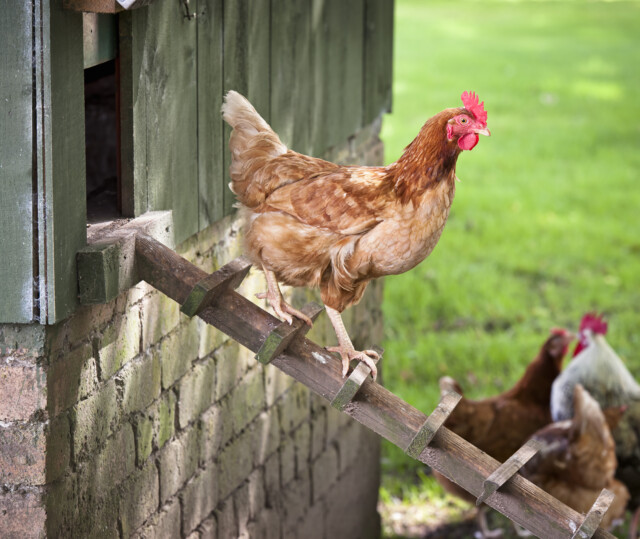HE is on a mission to help our pets . . . and is here to answer YOUR questions.
Sean, who is the head vet at tailored pet food firm tails.com, has helped with owners’ queries for ten years. He says: “If your pet is acting funny or is under the weather, or you want to know about nutrition or exercise, just ask. I can help keep pets happy and healthy.”
This week Sean helps a reader with chickens
Sean McCormack, head vet at tails.com, promises he can ‘help keep pets happy and healthy’
Q) MY chickens Betty and Blue used to get on brilliantly but since I introduced Buttons, feathers have been flying.
Someone said they need to get a pecking order.
It’s just the odd spat but should I be concerned or will it settle down?
Anne London, Sevenoaks, Kent
A) It is a natural process when new birds enter a flock and will settle down after a short time.
It is easier on each bird if you introduce more than one at the same time as the aggression is diluted over more birds, but poor Buttons is now bearing the brunt of the pecking order being re-established.
Just keep an eye on things, make sure there are no open wounds or damage to the skin and provide plenty of cover and obstacles within their run so she can get away and seek refuge if needed.
Q) WE have a beautiful garden that my wife and I love to sit in and enjoy a cuppa.
But the local cats also use it as their toilet and the stench is awful.
We have put very expensive cat scarers all over the garden, tried all sorts of deterrents such as citrus and expensive sprays, but nothing works.
Any advice on how to eliminate it and stop the cats?
William Murray, Pontefract, West Yorks
A) It’s part of cat ownership that is often overlooked in terms of responsibility.
We wouldn’t, or at least shouldn’t, let our dogs wander freely and go to toilet in our neighbours’ gardens.
The foolproof way to stop it is to prevent access, and there are various fencing solutions that can be fixed to existing walls and fences that keep cats out.
But they can be expensive and impractical to install in many gardens.
Aversive techniques are often advised, and can work, but are controversial — using water pistols or loud noises when cats are seen in the garden, for example. However it sounds like you’ve exhausted the spray and chemical deterrent options.
Q) I HAVE two female rabbits, Bunty and Mrs Hop, who get along great.
Is it necessary to spay them, as they are girls?
Emily Brown, Bedford
A) While there’s little chance of accidental pregnancy here (never say never if there are wild rabbits about), there are other reasons to get female rabbits spayed, or sterilised.
One is a quite common cancer, uterine adenocarcinoma — a tumour of the womb.
It occurs in up to 60 per cent of female rabbits over three years old, and the risk increases with age.
They can also develop problematic hormonal behavioural changes.
So, for a long, happy, healthy life I advise spaying female rabbits.
The benefits far outweigh any risks. Find a rabbit-savvy vet and talk to them about options.
Q) AFTER nine months of feeding a very nervous stray cat she is now beginning to trust us.
We feed her three times a day and she has access to our garage at all times, where we have set up bedding, though she has also begun sleeping indoors, especially in bad weather.
She needs worming but shuns any food with crushed up worm tablets in it.
Can you advise us what to do?
Norman Stanbridge, Petworth, West Sussex
A) My favourite trick for cats that just won’t be fooled by hiding a tablet in food, is to crush up the tablet, mix it with a dab of butter or Marmite and smear it on her leg.
She’ll have to groom it off and it’s quite tasty so she won’t mind much.
But if you can’t handle her, try reducing her feeds one day, giving her just one delicious meal in the evening with the wormer really mixed in well and see how you go.
Star of the week
SEEING dog Rosa has given her owner Dawn Crombie-Dick her freedom and smile back.
Dawn, 73, of Horsham, West Sussex, was born with limited sight, which she lost completely aged 13, but two-year-old Labrador retriever cross Rosa, who was trained by the Seeing Dogs Alliance, has helped her regain her independence.
 Seeing dog Rosa has given her owner Dawn Crombie-Dick her freedom and smile back
Seeing dog Rosa has given her owner Dawn Crombie-Dick her freedom and smile back
Dawn, a retired physiotherapist, said: “Rosa can take me to my friend’s boutique, to the coffee shop and the hall where I sing in the choir.
“Having a dog is life- enhancing – it gives you your smile back.”
For more info visit seeingdogs.org.uk.
Pet names get royal treatment
ROYAL pet names are soaring in popularity – and Prince George is top of the blue-blooded monikers for our four-legged friends.
A new survey by pet charity PDSA has revealed FOUR of the King’s grandchildren appear in the top ten – with over 15,000 dogs, cats and small furries named after George, Archie, Louis and Charlotte.
 Royal pet names are soaring in popularity – and Prince George is top
Royal pet names are soaring in popularity – and Prince George is top
George shares his name with more than half of them – 8,000 pet patients registered since 2015 across the PDSA’s 48 pet hospitals across the UK – revealing the nine-year-old prince’s huge appeal.
The second most popular regal name is Archie with 5,462 pets registered, closely followed by Harry at 4,822 – suggesting their popularity hasn’t waned among pet owners.
The rest of the royal top ten is: Louis on 2,018, followed by Meghan (1,100), William (572), Charlotte (264), Charles (198), Kate (131) and Camilla with 47.
The monikers of the King and Queen’s rescue dogs, Jack Russell’s Bluebell and Beth, have yet to appear on the top 10.
A total of 22,000 pets registered with the charity carry a royal name and the charity treats over 360,000 pets annually.
Find out more at pdsa.org.uk.








